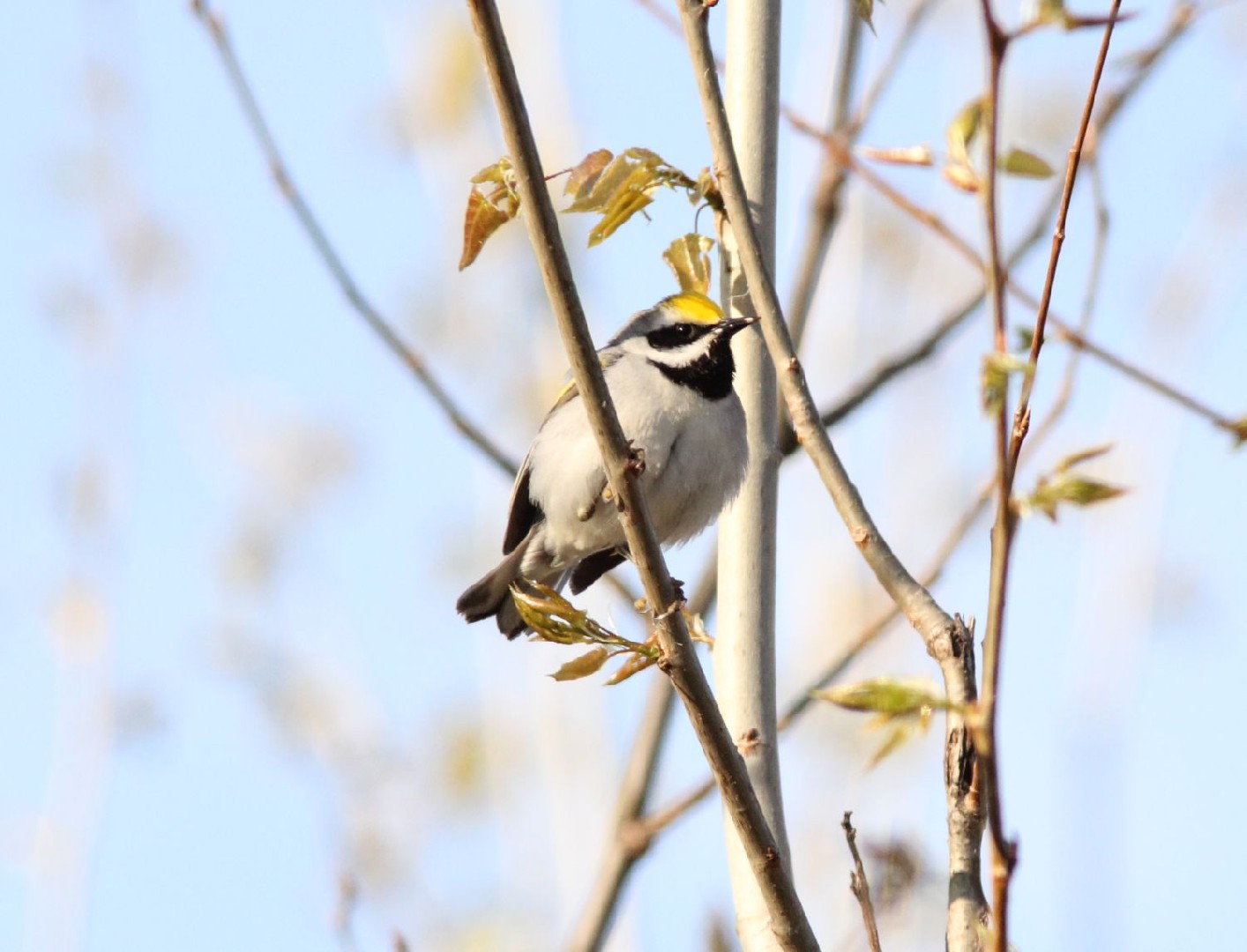Golden-winged Warbler
A species of Vermivora Scientific name : Vermivora chrysoptera Genus : Vermivora
Golden-winged Warbler, A species of Vermivora
Botanical name: Vermivora chrysoptera
Genus: Vermivora
Content
Description General Info
 Photo By Caleb Putnam , used under CC-BY-SA-2.0 /Cropped and compressed from original
Photo By Caleb Putnam , used under CC-BY-SA-2.0 /Cropped and compressed from original Description
This is a small warbler, measuring 11.6 cm (4.6 in) long, weighing 8–10 g (0.28–0.35 oz), and having a wingspan range 20 cm. The male has black throat, black ear patch bordered in white, and a yellow crown and wing patch. Females appear similar to males, with a light gray throat and light gray ear patches. In both sexes, extensive white on the tail is conspicuous from below. Underparts are grayish white and the bill is long and slender. Unlike most warblers, juveniles can be reliably sexed (using throat patch color) approximately 15 days after fledging. 
Size
12-13 cm (4.75-5 in)
Life Expectancy
7 years
Nest Placement
Ground
Clutch Size
3 - 6 eggs
Incubation Period
1 brood
Number of Broods
10 - 12 days
Nestling Period
8 - 9 days
Feeding Habits
Golden-winged Warbler's diet consists mainly of insects such as caterpillars, moths, spiders, and especially leafroller caterpillars. They forage among foliage, using their sharp bills to probe into curls of leaves for concealed prey, and infrequently catch insects mid-flight.
Habitat
Golden-winged Warbler thrive in early-successional habitats, such as shrubby thickets and regenerating woodlands. Their preferred environments blend open and forested landscapes, especially wet thickets, clearcuts, and bogs, often with aspen or willow. They inhabit areas at low to moderate elevations that experience disturbances, fostering suitable habitat conditions. During breeding, they opt for shrubland, shifting to mature forests post-fledging, and occupying semiopen woodlands and agricultural settings in tropical regions during winter.
Nest Behavior
Golden-winged Warbler females construct the nest over 1–3 days, often abandoning it if disturbed. Egg-laying patterns are sensitive to disruptions, with maternal care being paramount.
Nest Characteristics
Golden-winged Warbler typically nests on the ground, well-hidden by overhead vegetation. The cup-shaped nest is built by the female using leaves, bark, and plant strips, measuring 3.5 to 6 inches wide and 1 to 2.5 inches deep.
Dite type
Insectivorous
General Info
Feeding Habits
Bird food type
Bird Feeder Type

Small Tube Feeder

Platform
Behavior
Golden-winged Warblers exhibit a dynamic range of behaviors adapting to their habitats. They actively forage in brushy terrains, skillfully navigating foliage to locate prey, and are occasionally spotted performing acrobatics akin to chickadees. The breeding season ushers in pronounced behavioral shifts, with males becoming vocally and physically assertive to delineate territory, employing tail spreads, chases, and sometimes combat. Courtship sees males performing specific rituals, including crown-raising and slow wingbeat flights to woo mates. Post-mating, secrecy shrouds their nesting activities. Typically monogamous, golden-winged Warblers nevertheless have occasional reports of polygamy.
Species Status
Not globally threatened.
Scientific Classification
Phylum
Chordates Class
Birds Order
Perching birds Family
New world warblers Genus
Vermivora Species
Golden-winged Warbler